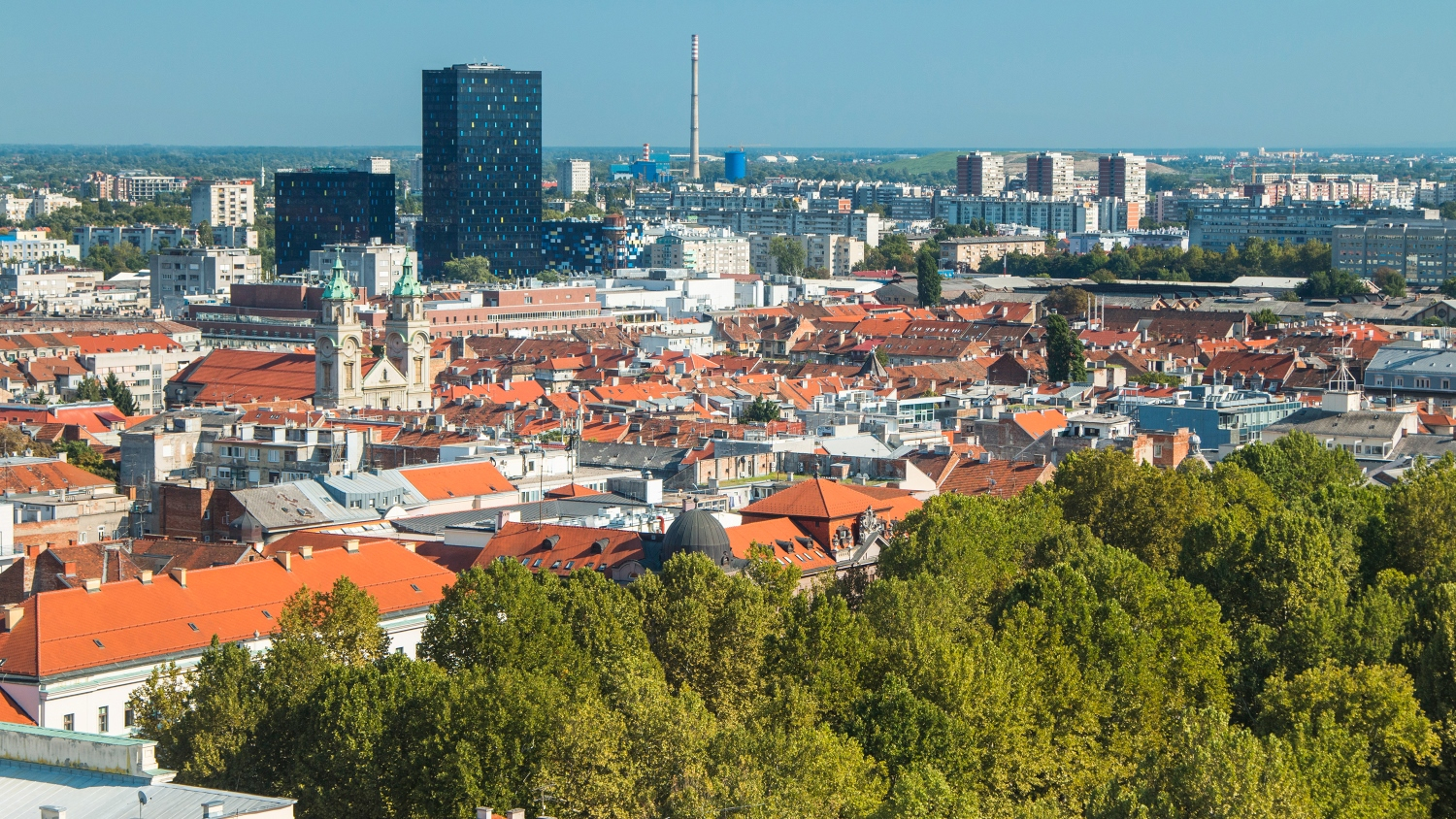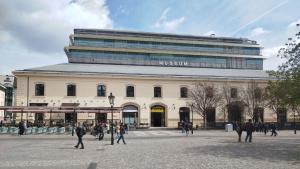
It’s at last becoming possible to assess the consequences for Croatia’s construction sector of the country’s July 2020 elections. Jockeying for governmental positions, COVID-19- and tourism-season-related priorities and other pressing matters prevented the new Croatian Democratic Union (HDZ) led government from moving on its larger agenda until recently. Now, though, the political picture, and the impact of the elections on Croatia’s construction sector, is getting clearer, according to a report by the Eastern European Construction Forecasting Association.
EECFA (Eastern European Construction Forecasting Association) is conducting research on the construction markets of 8 Eastern-European countries such as Bulgaria, Croatia, Romania, Russia, Serbia, Slovenia, Turkey and Ukraine.
The July elections were particularly important to the Croatian construction sector for a number of reasons. They occurred mid-COVID-19-pandemic, when a change in government or even just a change in government policy would have had large consequences for Croatia’s fight against the disease and so for public- and private-sector finances and accordingly for the resources that would be available in the next few years for construction projects. This was especially true as the elections were called in the midst of Croatia’s tourism season, a critically sensitive time, as the survival of the country’s hospitality sector, which is responsible for much of Croatia’s building construction, was at stake, and relatively soon after the Zagreb earthquake, which caused on the order of €12 billion in damage to the city’s buildings and infrastructure that must be repaired.
Making the elections still more consequential, they seemed likely to decide the fates of several political parties and movements, some with significant influence on Croatia’s construction sector, as well as those of a few individually powerful politicians important to that sector. Finally, they also seemed likely to affect Croatia’s relationship with the new EU Commission and EU Parliament, relations determinative of the amount and nature of EU COVID-19- and earthquake-related aid that Croatia could secure.
So, how have things turned out? Regarding winners and loser, the centre-right HDZ was by far the biggest winner (increasing by five the number of seats held by its coalition in the one hundred fifty-one seat parliament) and the centre-left Social Democratic Party (SDP) the biggest loser (with its coalition’s seat count falling by ten). Far-right defectors from the HDZ did well as a new party (securing sixteen seats), but paradoxically lost power, since the HDZ’s strong performance made them irrelevant to the formation of an HDZ-led government.
The consequences of the HDZ victory are mostly positive for the construction sector. Importantly, there will be substantial continuity in the government’s construction policy. While by no means certain, it’s possible that a victory by the SDP and its coalition could have led to months of fractious conflict within the coalition, and indeed within the SDP itself, and put in power a party that after many years out of government might no longer have been familiar with how to rule.
As to the policies that the new government will adopt, further simplification of bureaucratic procedures relating to construction is likely, as is a continued emphasis on large infrastructure projects and COVID-19- and earthquake-damage amelioration measures. Crucially as to the latter, Andrej Plenković, Croatia's prime minister both before and now again after the elections, has great pull with the European Commission, since he played a major role in brokering the selection of Ursula von der Leyen as the Commission’s president. (In fact, von der Leyen, while EC president, made a controversial video supporting Plenković’s candidacy, for which she later apologized.) For the same reason, he has similar influence with the European People’s Party, of which the HDZ is a member. These relationships have very likely already been reflected in the large sums that the EU proposes to allocate to Croatia for earthquake and COVID-19 relief. They probably also mean that the EU will be more flexible in how Croatia spends the money that it receives for these purposes. All good news for construction in Croatia and in particular for civil engineering projects.
Also important to the construction sector is the dramatic decline of the Croatian People’s Party (HNS) as a national political force and the eclipse of its leaders. The HNS kept only one parliamentary seat and no ministries. The party’s formerly extensive influence on energy matters is now very much past tense, and its members are being gradually removed from positions of power in Croatian state-owned enterprises, a process likely to be accelerated by the arrest of the CEO of JANAF, Croatia’s gas pipeline company, who was formerly a HNS member is said to still be close to that party. The result is likely to be a better alignment of Croatia’s energy policy with its policies in other spheres. In particular, it will likely lead to a construction program for electrical-power facilities more in keeping with Croatia’s energy needs than with its government’s political makeup.
Other developments have been less positive. The HDZ has not followed through on some of its electioneering promises. One important one is that the number of Croatian sub-sovereign administrative divisions would be reduced from the present 428 municipalities (the smallest of which has 137 inhabitants), 128 cities and twenty counties to a more sensible number. The cost of maintaining so many governmental organizations is quite high, with, for example, a mayor, municipal secretary, administrator/bookkeeper, etc. required for each municipality and city not to mention the offices, office cleaners, doorkeepers, official automobiles and the like. that lead to even more expenses. It appears, though, that the internal political cost of rationalizing Croatia’s local governments, which would be a painful task for a government of any political stripe, is too high for the current one, and so significant reductions in numbers and payrolls are unlikely. The rub here is not just that Croatia’s surfeit of local governments is expensive and leads to corruption. It’s also that a reduction in their number and related reforms are high on the priority list of the EU. So a failure to follow through on the promised reforms could lead to friction in the release of EU funds, including construction-related money.
The new government has also scored some own goals with its post-earthquake and anti-COVID-19 policies. As to its response to the devastation that the earthquake wrought in and near Zagreb, promised relief has been slow in coming, and the legislation governing it was not well drafted. While matters are now being clarified, funding delays have caused real suffering for those whose residences and offices the earthquake rendered unsafe.
As to the COVID-19 pandemic, the prior HDZ government’s success in the spring in tamping down COVID-19 infections eroded dramatically in the summer and fall. Daily infections are now at record levels, likely a result of lax enforcement of preventive measures in the summer (to accommodate tourists and electioneering) and continued lack of enforcement into the fall (reflecting public resistance to inconvenience and a loss in confidence in the government figures leading Croatia’s COVID-19 response). The upshot may be a weaker tourism season in 2021 as travellers no longer see Croatia as safe. This would in turn hurt the hotel construction sector directly and because tourism is such a large part of the Croatian economy, many others indirectly. A failure to get COVID-19 back under control could also have other, nearer-term economic consequences through mounting health-care costs (including those relating to the disease’s long-term consequences) and worker absences due to self-isolation and disease symptoms. The latter absences could be quite prolonged given COVID-19’s effects.
Budgetary problems, including those alluded to above, are another problem facing the new government, and only a few of them are of its own making. Income and value-added tax receipts are down dramatically. Combined with the pandemic support payments needed to prevent massive unemployment and company failures, these shortfalls have blown a large hole in Croatia’s budget that the government has covered by borrowing. Earthquake relief and further COVID-19 measures will exacerbate the budgetary problem, and borrowing more is not a viable solution. While Croatia has been promised substantial EU aid, indeed more on a per capita basis than most EU members, it’s still not clear when that aid will arrive or how fast the government can disburse it once received. Progress at the EU level in this matter has so far been slow, and the consequences could be severe for all Croatian construction sectors, including civil engineering if it does not speed up soon.
All in all, the outcome of Croatia’s July elections is likely the best that the country’s construction sector could have hoped for. Policy continuity, experience in governing and good relations with the EU are essential to Croatia at the present time. By triggering reform and renewal in the SDP, the elections may even have laid the groundwork for a more competitive, and hence more responsive, the political environment in Croatia, which would also likely be a positive not just for the country, but for the sector.



